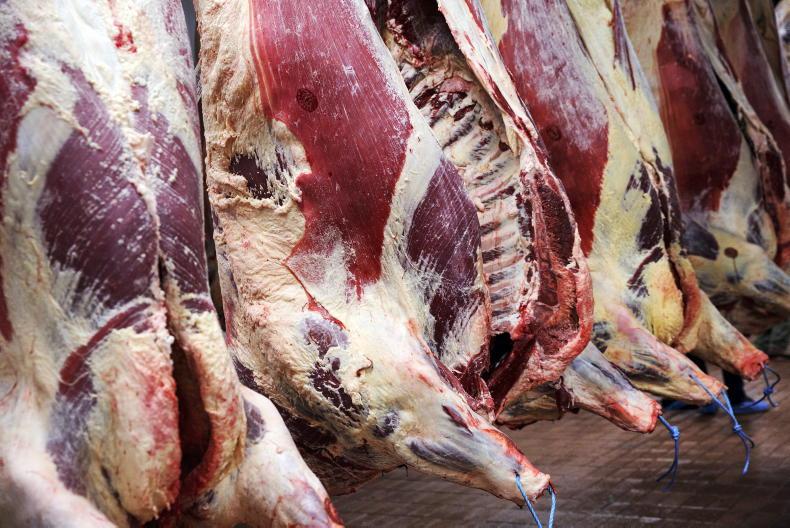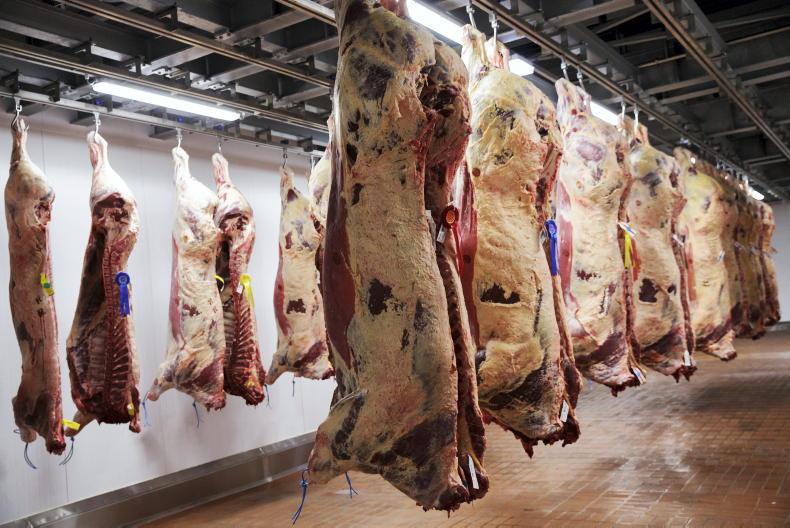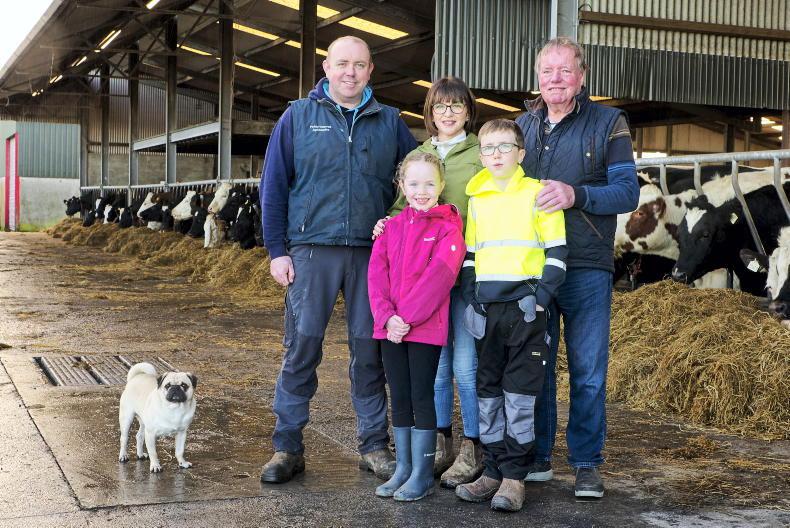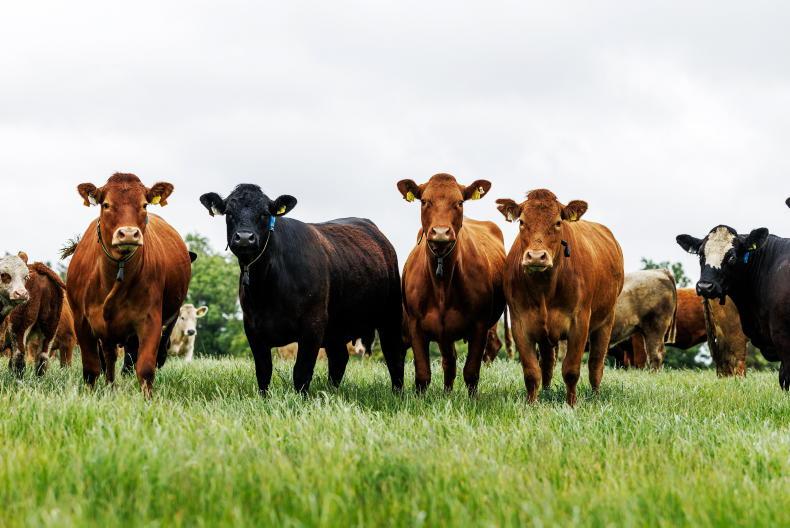The economic breeding index (EBI) remains the cornerstone of breeding decisions to produce female replacements on Irish dairy farms; this has recently been complemented with the dairy-beef index (DBI), which is used to identify beef bulls suitable for mating to dairy females.
Sire mating advice systems in ICBF recommend which bull should be mated to which female – a type of Tinder for cows.
The evidence is clear that the EBI delivers more profitable dairy cows across a range of production systems; it does so through increasing the solids yield per lactation which multiples up considering that the EBI is also concurrently improving the cow fertility and longevity.
Yields are therefore increasing through improved genetic merit for milk solids production but also through longer lactations and having a more mature cow herd.
Higher-EBI cows have also been proven experimentally to be more carbon and nitrogen efficient than lower genetic merit contemporaries.

Frank Buckley talking about the best cow type at the last Moorepark open day. \ Donal O'Leary
Achieving the higher solids yield through predominantly greater milk composition ensures the herd remains within the appropriate nitrates bands without comprising herd profit.
The greater availability of sexed semen from high EBI sires complemented with a deeper knowledge of how and when to optimally use sexed semen has opened the door for the strategic use of sexed semen for generating female replacements.
The use of sexed semen must, however, be carefully considered, as overall pregnancy rate is, on average, lower for inseminations with sexed semen.
Nonetheless, some herds have achieved pregnancy rates from sexed semen equivalent to that from conventional semen, highlighting that it is possible to achieve excellent reproductive performance using sexed semen.
On the other hand, some herds experience poor pregnancy rates with sexed semen, highlighting that attention to detail is critical when using sexed semen. Farmers should target usage of sexed semen on the best EBI females.
Herds successfully using sexed semen also have a greater opportunity to use beef semen once sufficient dairy replacements have been generated.
The dairy-beef index (DBI) marries the desires of dairy farmers for short-gestation, easy-calving beef sires with that of the beef farmer which is a strong and efficient calf with good carcase credentials.
Using high dairy-beef index bulls, especially when focusing on the high beef sub-index of the index (assuming the calving difficulty genetic merit of the bull is appropriate for the herd) should, on average, deliver calves with a high commercial beef value (CBV) for sale.
The economic breeding index (EBI) remains the cornerstone of breeding decisions to produce female replacements on Irish dairy farms; this has recently been complemented with the dairy-beef index (DBI), which is used to identify beef bulls suitable for mating to dairy females.
Sire mating advice systems in ICBF recommend which bull should be mated to which female – a type of Tinder for cows.
The evidence is clear that the EBI delivers more profitable dairy cows across a range of production systems; it does so through increasing the solids yield per lactation which multiples up considering that the EBI is also concurrently improving the cow fertility and longevity.
Yields are therefore increasing through improved genetic merit for milk solids production but also through longer lactations and having a more mature cow herd.
Higher-EBI cows have also been proven experimentally to be more carbon and nitrogen efficient than lower genetic merit contemporaries.

Frank Buckley talking about the best cow type at the last Moorepark open day. \ Donal O'Leary
Achieving the higher solids yield through predominantly greater milk composition ensures the herd remains within the appropriate nitrates bands without comprising herd profit.
The greater availability of sexed semen from high EBI sires complemented with a deeper knowledge of how and when to optimally use sexed semen has opened the door for the strategic use of sexed semen for generating female replacements.
The use of sexed semen must, however, be carefully considered, as overall pregnancy rate is, on average, lower for inseminations with sexed semen.
Nonetheless, some herds have achieved pregnancy rates from sexed semen equivalent to that from conventional semen, highlighting that it is possible to achieve excellent reproductive performance using sexed semen.
On the other hand, some herds experience poor pregnancy rates with sexed semen, highlighting that attention to detail is critical when using sexed semen. Farmers should target usage of sexed semen on the best EBI females.
Herds successfully using sexed semen also have a greater opportunity to use beef semen once sufficient dairy replacements have been generated.
The dairy-beef index (DBI) marries the desires of dairy farmers for short-gestation, easy-calving beef sires with that of the beef farmer which is a strong and efficient calf with good carcase credentials.
Using high dairy-beef index bulls, especially when focusing on the high beef sub-index of the index (assuming the calving difficulty genetic merit of the bull is appropriate for the herd) should, on average, deliver calves with a high commercial beef value (CBV) for sale.











SHARING OPTIONS